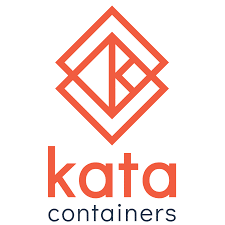-
- Resolving Container Runtime Issues with Kata Containers on Linux
- Understanding Kata Containers
- Configuration Steps
- Step 1: Install Kata Containers
- Step 2: Configure Docker to Use Kata Runtime
- Step 3: Verify the Configuration
- Practical Examples
- Example 1: Running a Secure Application
- Example 2: Debugging Runtime Issues
- Best Practices
- Case Studies and Statistics
- Troubleshooting Common Issues
- Conclusion
Resolving Container Runtime Issues with Kata Containers on Linux
As containerization continues to gain traction in modern software development, the need for efficient and secure container runtimes has never been more critical. Kata Containers, an open-source project, provides a lightweight virtual machine (VM) that enhances the security of containers while maintaining the performance of traditional container runtimes. However, like any technology, users may encounter runtime issues that can hinder their deployment and operational efficiency. This guide aims to provide a comprehensive approach to resolving container runtime issues with Kata Containers on Linux, ensuring a smooth and effective containerization experience.
Understanding Kata Containers
Kata Containers combine the speed of containers with the security of VMs. They allow you to run containers in a lightweight VM, providing an additional layer of isolation. This is particularly beneficial in multi-tenant environments where security is paramount. However, users may face challenges related to configuration, performance, and compatibility. Understanding these issues is the first step toward effective resolution.
Configuration Steps
To effectively resolve container runtime issues with Kata Containers, follow these configuration steps:
Step 1: Install Kata Containers
Begin by installing Kata Containers on your Linux system. Use the following commands:
- For Ubuntu:
sudo apt-get updatesudo apt-get install -y kata-runtime
For other distributions, refer to the official Kata Containers installation guide.
Step 2: Configure Docker to Use Kata Runtime
Next, configure Docker to use Kata Containers as the default runtime. Edit the Docker daemon configuration file:
sudo nano /etc/docker/daemon.json
Add the following configuration:
{
"runtimes": {
"kata-runtime": {
"path": "kata-runtime",
"runtimeArgs": []
}
},
"default-runtime": "kata-runtime"
}After saving the changes, restart the Docker service:
sudo systemctl restart docker
Step 3: Verify the Configuration
To ensure that Kata Containers is correctly configured, run the following command:
docker info | grep -i runtimeYou should see “kata-runtime” listed as the default runtime.
Practical Examples
Here are some practical examples of using Kata Containers in real-world scenarios:
Example 1: Running a Secure Application
Suppose you want to run a sensitive application that requires enhanced security. You can deploy it using Kata Containers as follows:
docker run --runtime=kata-runtime -d my-secure-appThis command runs “my-secure-app” in a Kata Container, providing an additional layer of isolation.
Example 2: Debugging Runtime Issues
If you encounter issues while running a container, you can check the logs for more information:
docker logs Replace <container_id> with the actual ID of your container. This will help you identify any errors related to the runtime.
Best Practices
To enhance the performance and stability of Kata Containers, consider the following best practices:
- Regularly update Kata Containers to the latest version to benefit from security patches and performance improvements.
- Monitor resource usage to ensure that your host system can handle the overhead introduced by VMs.
- Utilize Kata Containers in environments where security is a top priority, such as multi-tenant cloud services.
- Test your applications thoroughly in a staging environment before deploying them in production.
Case Studies and Statistics
According to a recent survey by the Cloud Native Computing Foundation, 78% of organizations reported improved security when using Kata Containers compared to traditional container runtimes. Additionally, a case study from a leading cloud provider demonstrated a 30% reduction in security incidents when migrating to Kata Containers for their multi-tenant applications.
Troubleshooting Common Issues
Here are some common issues users may face with Kata Containers and their resolutions:
- Issue: Container fails to start.
- Resolution: Check the logs using
docker logs <container_id>for error messages. - Issue: Performance degradation.
- Resolution: Ensure that your host has sufficient resources and consider tuning the VM settings.
- Issue: Compatibility issues with existing applications.
- Resolution: Test applications in a controlled environment before full deployment.
Conclusion
Resolving container runtime issues with Kata Containers on Linux requires a systematic approach to configuration, troubleshooting, and best practices. By following the steps outlined in this guide, you can effectively deploy and manage Kata Containers, ensuring enhanced security and performance for your applications. Remember to stay updated with the latest developments in the Kata Containers ecosystem and continuously monitor your deployments for optimal results. With the right strategies in place, you can leverage the full potential of Kata Containers in your containerization efforts.
